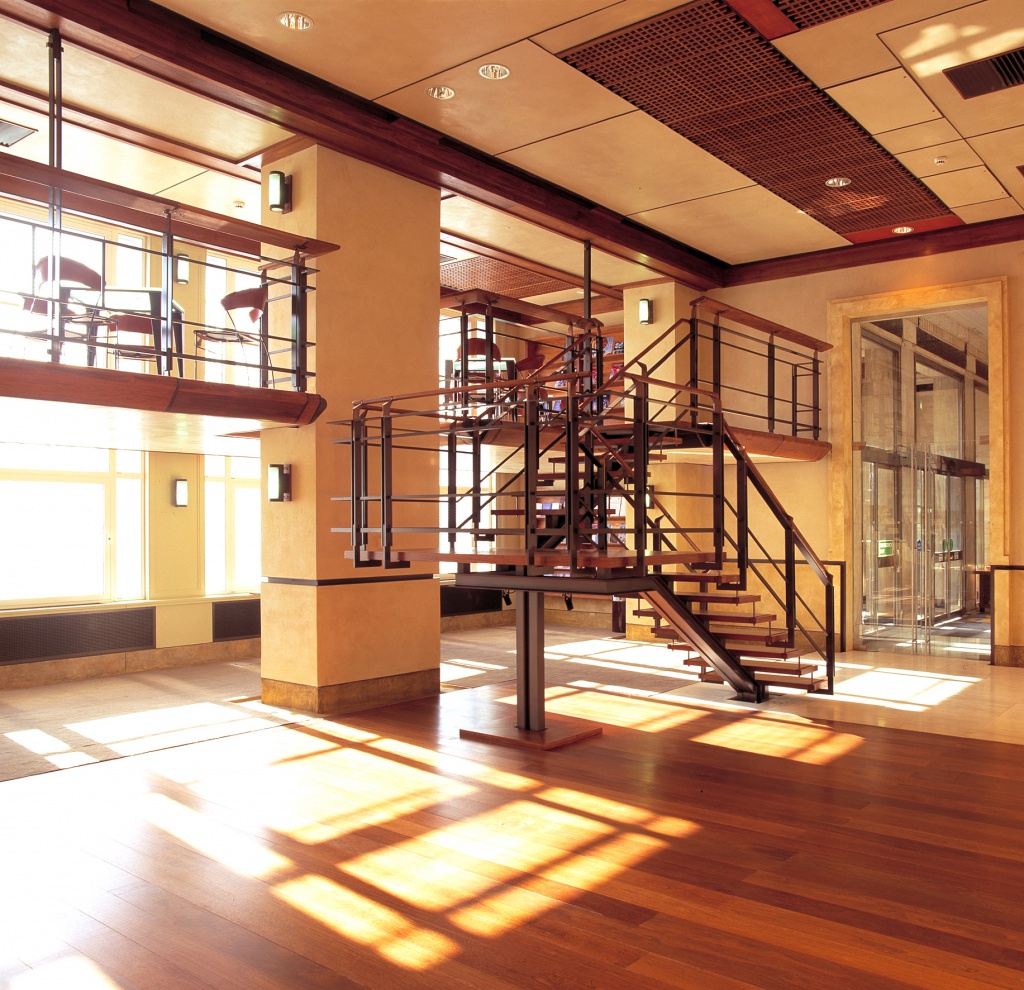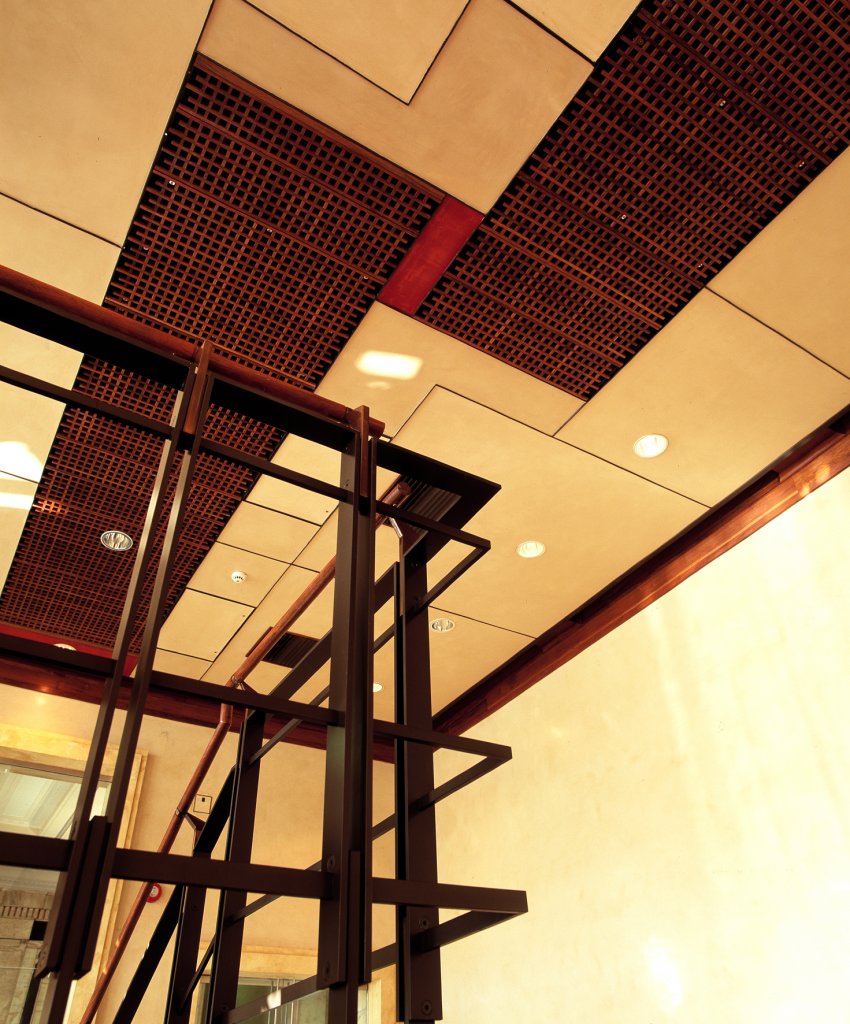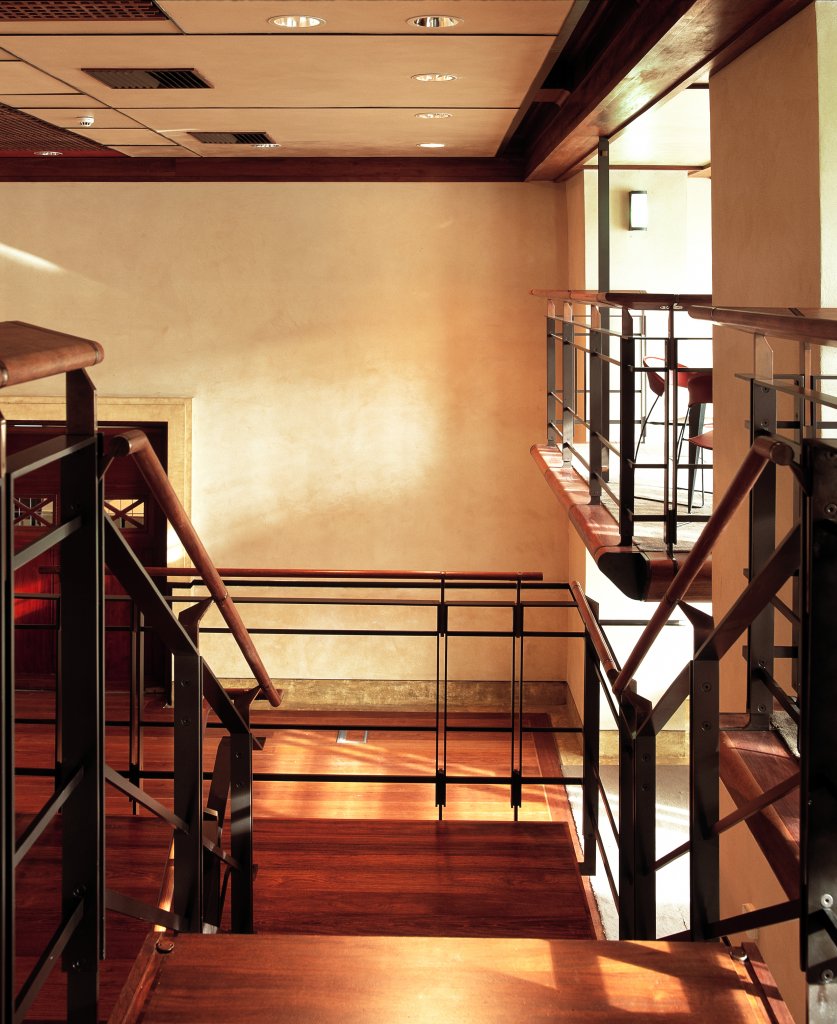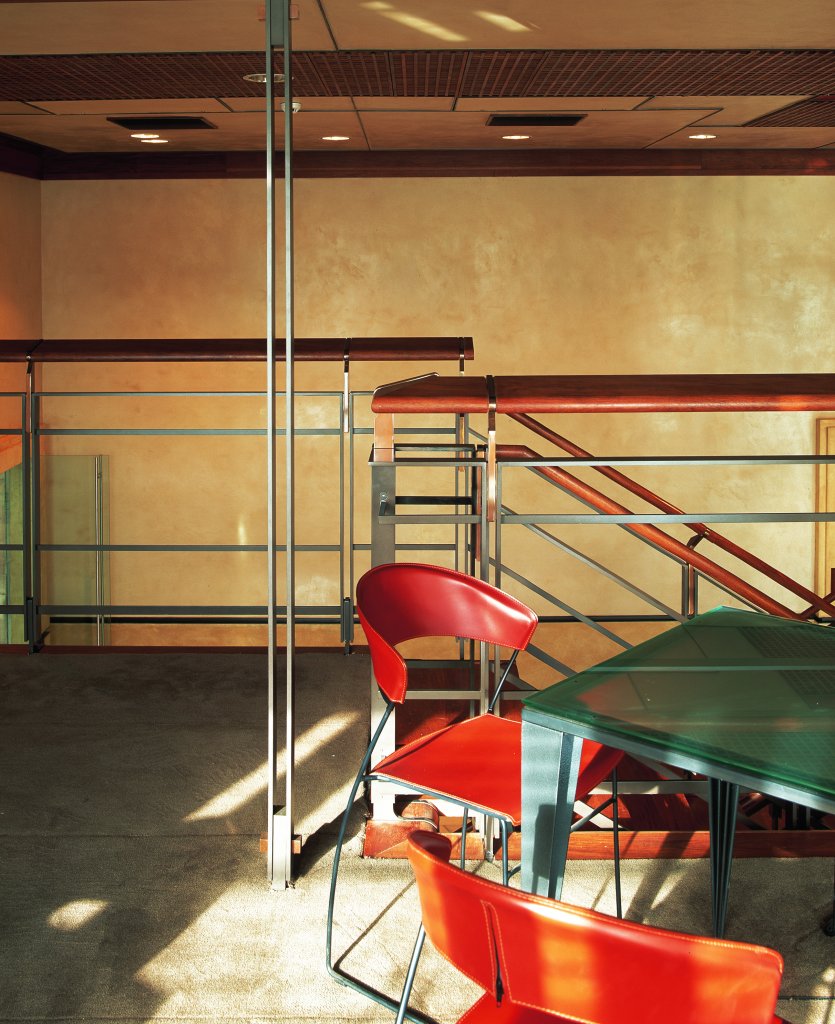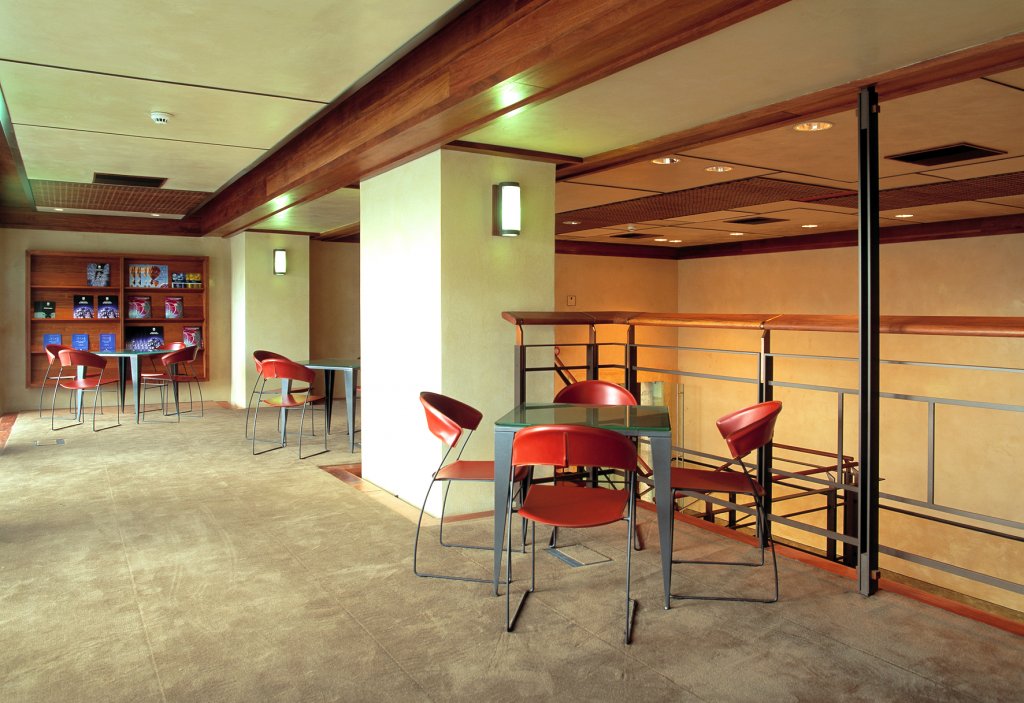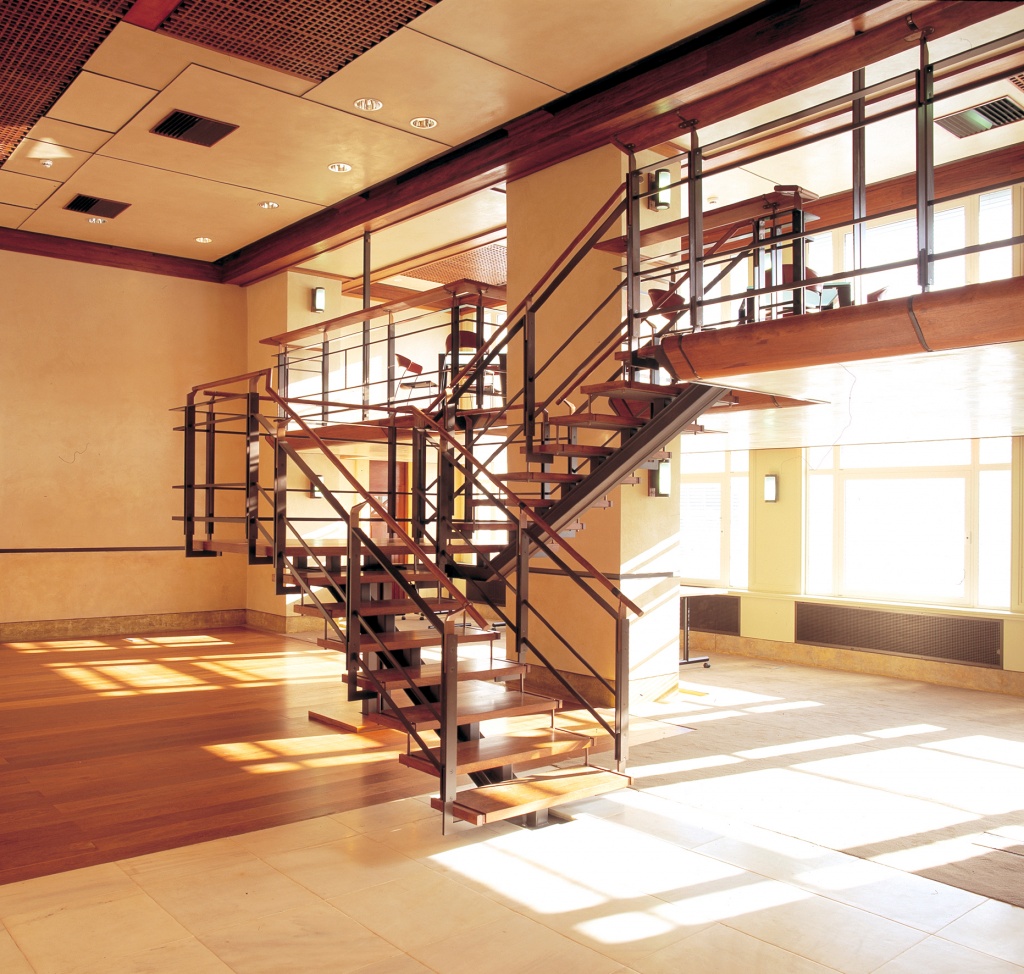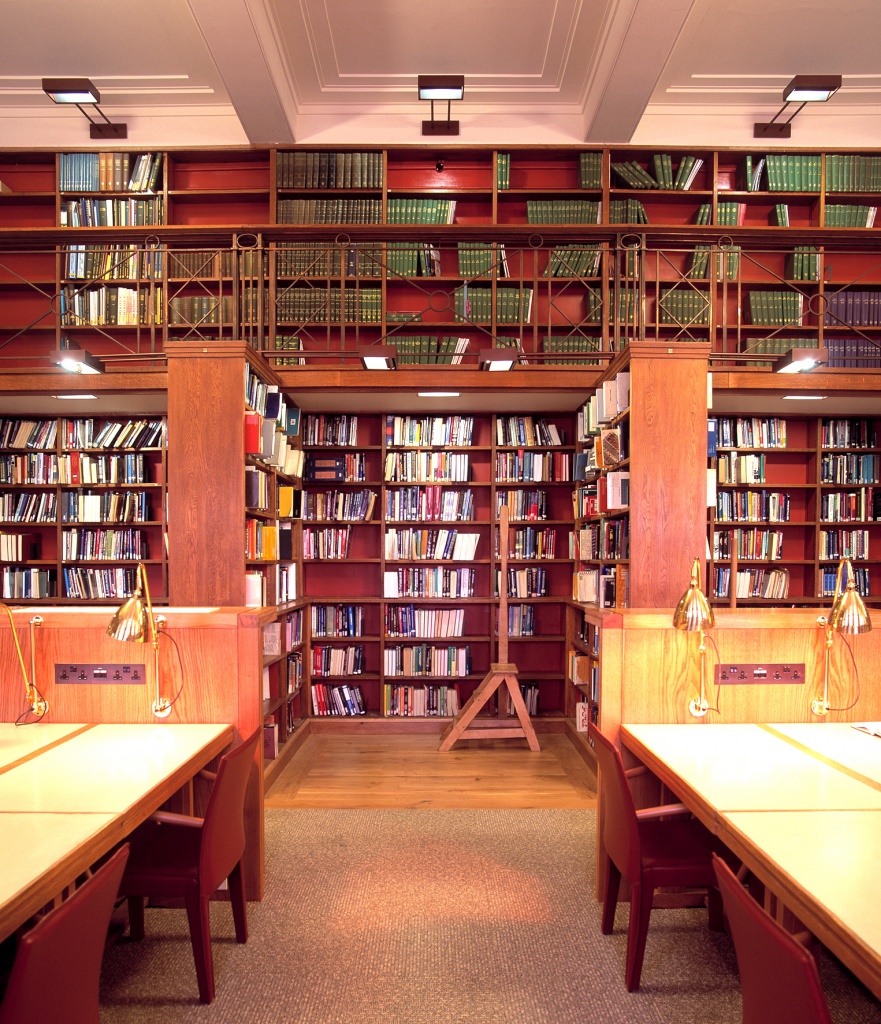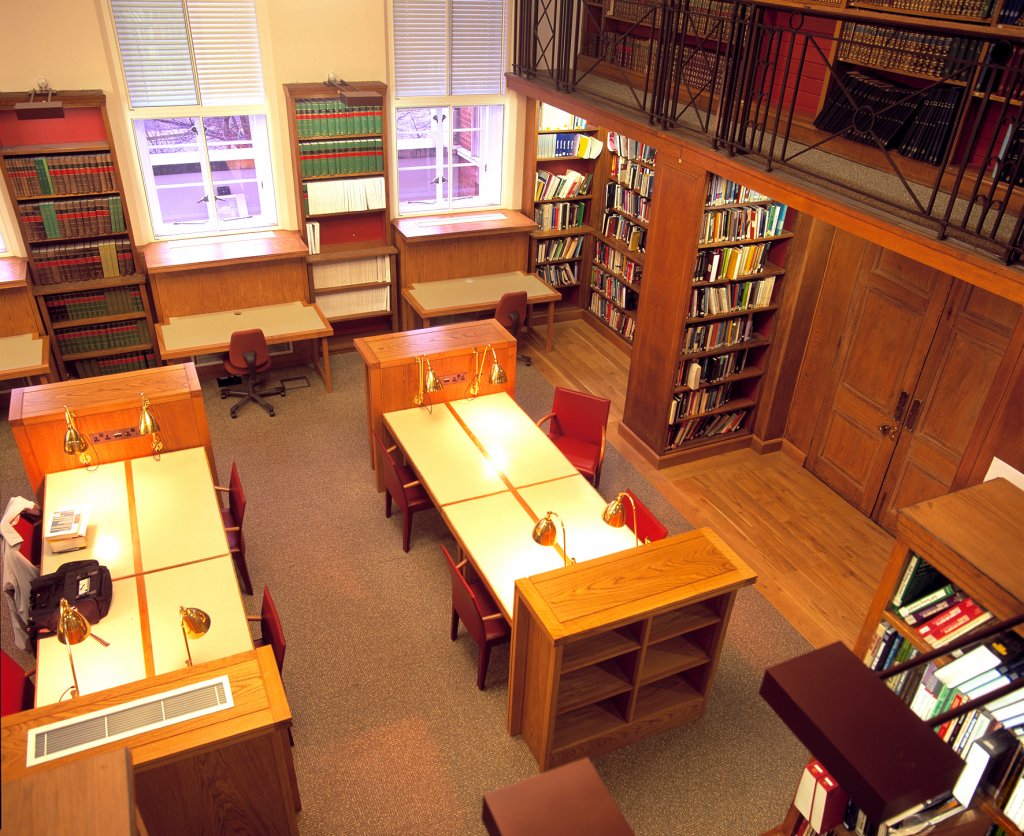Client: Institution of Electrical Engineers
Location: Savoy Place
Lee/Fitzgerald were asked to redesign the existing entrance hall and front-of-house facilities at the Institution of Electrical Engineers (IEE) on the Embankment in central London. The brief was to improve flexibility and create multi-use facilities. To release the full potential of the available space and bring light into the building two major structural piers and several small cellular rooms were removed. Into the resulting large new space a dramatic steel and timber mezzanine has been inserted. The resultant architecture was developed specifically to respect and respond to the adjoining 1920s marble-lined entrance hall, and also reference the mahogany-panelled lecture theatre beyond; both were designed by the well known architect Charles Holden. The pallet of new materials, – polished plaster, bronze, marble, steelwork, Merbau hardwood – were selected to compliment Holden’s adjacent designs.
The new foyer-spaces act as a meeting place for members, lounge area, and function space for conference delegates, buffets and exhibitions.
‘One can only congratulate both the architect for such an elegant design, and the IEE for being such an enlightened client.’ (RIBAJ Interiors June 2001).
The Institution of Electrical Engineers’ (IEE) library, designed by Charles Holden, is a splendid oak-lined room with a coffered ceiling and a balcony with bronze balustrades. The design language is a severely simple Arts & Crafts classicism. The library had, however, come to look extremely tired, with poor lighting and unsatisfactory working conditions – compounded by a series of unsympathetic alterations made during the 1960s.
The brief was to restore the interior to its former glory, whilst incorporating an additional twelve workspaces, extra shelving, full power-and-data connections to all desks, new lighting and comfort cooling. The design approach adopted pays absolute respect to the existing interior. Existing shelves were restored and given new lighting. A computer floor was installed for flexible data and power connections; the floor void also acts as an air plenum for comfort cooling, avoiding the need for unsightly ductwork. All visible data, power, lighting and fancoil units are incorporated within purpose-designed pieces of furniture, which take their cue from existing detailing motifs. The new furniture is constructed from matching English oak. The decorative colour scheme enhances the natural colourings of the timber. A bronze glazed kiosk, lined in oak on the library side and featuring polished plaster panels on the side of the marble-lined lobby, improves the transition from the library to the rest of the building.
The result is a state-of-the-art library, where it is extremely difficult to distinguish old from new, with modern technology seamlessly incorporated.

